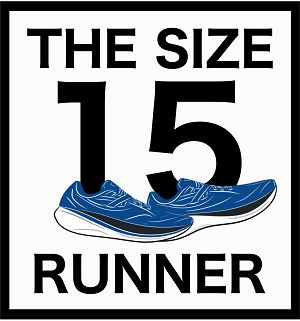There’s a plethora of race day tips available, so why not muddy the waters and share what’s worked for me? Here’s the definitive guide for everything you need to optimize your race day experience and earn that PR.
1. Time it right
With all momentous occasions in life, you need more time than you think to get ready. Surprise! Race day is the exception. “The hay is in the barn,” as they say, so there’s nothing left for you to do on the morning of the race — no warming up, fueling, or preparing needed. Which is fortunate, because you’ll spend most of the time on race morning half asleep on the toilet as you daydream about getting a PR. You’ll start to think you’re having a nightmare when you realize you might be late to the start of the race. Luckily, as with everything in life, success on race day is just about physically showing up. Being on time is simply a bonus.
You’ve nailed the balancing act of juggling your demanding training schedule with work, social life, and responsibilities at home, so make sure you stick the landing by worrying about getting sufficient sleep the night before the race. Fortunately, as experienced racers can tell you, with your training completed, you’ll sleep just like a baby the night before the race — constant tossing and turning and some occasional weeping at various points throughout the night.
Time is always at a premium, but race morning is the one time when you should pay a premium by trying to sneak in a few extra minutes of sleep. So, press that snooze button and sleep in as long as you can until there’s a real concern that you might be late. Trust the process: it’ll help you skip all those repeat trips to the bathroom from the pre-race jitters. Instead, save your bowel movements for just one trip to the commode right before the race clock hits 0:00:01.
2. Fuel the fire
Congrats! You’ve accomplished the daunting feat of carb loading several days prior to your race. Stuffing your face with fettuccine alfredo and garlic bread, bagels smothered in cream cheese and topped with lox, and meat-lovers pizza with a side of breadsticks wasn’t easy, but you eagerly met the challenge with an open mouth. You thought the hard part was over; you were wrong. Now comes the real obstacle. Your mission (and you should choose to accept it) is to stuff yourself with as many carbs as you can keep down the night before the race. It’ll be a tough balance to strike, but if you somehow nail it, you’ll put yourself in the best position to toe the starting line sufficiently fueled.
“The most divisive topic in running: What really is the right number of gels to race with?”
Now we come to one of the most divisive questions in running: What’s the appropriate number of gels? Some overdo it and end up decorating the road with glucose and fructose, and others don’t use enough gels and risk being comatose with several miles left. So how can you determine the optimal number of ooey, gooey gels? It’s simple, really: whenever you feel even the slightest bit of discomfort during the race, it’s gel time! That’s your body’s way of telling you that you need more fuel. At no point during your race should you feel challenged. You’ve already challenged yourself enough completing weeks of training.
3. Keep it original
It’s imperative to try new things on race day. Simply put, race day is an entirely whole other beast than training. Nothing worked perfectly for you while training, so the race is your one shot to have everything go just right. No pressure.
“Make damn sure everything you consume and wear is totally different than what you trained with.”
From food and drink, to apparel and shoes, make damn sure everything you consume and wear is totally different than what you trained with. Think of race morning like Christmas morning — you finally get to open the box of overrated shoes and that tacky outfit you bought yourself. You may discover there’s insufficient storage in those shorts, and that singlet may literally rub you the wrong way to the point of bleeding from intense chafing, but you must race in the most expensive apparel to give you that competitive advantage over other runners in less-expensive gear.
Speaking of paying a high price, those Maurten gels aren’t cheap! That’s why you’ve saved them for race day and didn’t dare waste your money using them while training. And while Gatorade and other sports drinks help racers on the course, they have too much sugar to train with consistently. You were smart to avoid them while training and save your sugar intake for race day. Your stomach should probably be fine with new sources of electrolytes, so trust your gut, but be wary of your mind.
4. Have a plan
To save the most time and money, it’s crucial to wait until race morning to determine your commute. You’ll only be able to discover the exact price of a ride share service and exactly how long you’ll have to wait for one to pick you up, on the morning of the race. If you find that Uber or Lyft is not feasible, force your significant other to wake up at the crack of dawn to drive you at the last minute. Use the threat of missing the start of the race as your excuse. Traveled alone for the race? Consider running to the starting line as your warm up. You’ll be able to boast at the starting line that you already ran several miles before anyone else. They’ll all love to hear it.
“The more runners you sprint by, the greater the boost to your ego, which is all you need to reach the finish line.”
A good rule of big toe is to arrive at the starting line a good five or six minutes prior. You don’t want to risk your muscles cramping up from standing around too long.
Remember, it’s not how you start that’s important, but how you finish. So don’t worry about going too fast out of the gate. The more runners you sprint by, the greater the boost to your ego, which is all you need to reach the finish line. Break free from the pack of surrounding runners to spread your wings and fly. Regardless of how you finish, at least you can say you were in one of the top spots at one point in the race.
5. Excuse yourself
Not every race will meet your expectations — and that truly sucks. Regardless of how you perform, you should always have at least an excuse or two prepared for why you didn’t run a faster time. Chalk it up to the weather, insufficient sleep, unforeseen GI distress, the course, or your shoes and outfit. Any and all excuses are valid to help your pride. The more creative, the better.
Following the race, you may experience extreme elation followed by a range of other conflicting emotions, including some PTSD. You may even lash out at friends and family due to exhaustion and hunger, but all these mood swings are normal; it’s simply your brain trying to process the torture you just inflicted upon your body.
In the days following the race, in addition to resting and staying hydrated, take some time for your mind as well. Reflect on the past several months of training and all the time, sacrifices, and work you put in to prepare for the special day. Then, consider if your race performance was really worth it. That should be the only factor determining whether you will ever register for another race. If you decide to run another one, this trusted guide will be here for you yet again.








